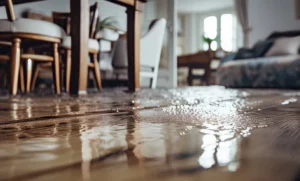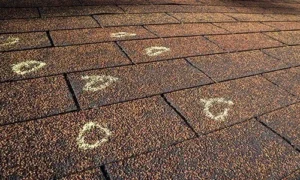Texas is no stranger to severe storms and hurricane season is still in effect. This means high winds and heavy rains that could possibly damage your home and property.
With over 50 years of experience in the restoration business, Mr. Restore has helped many recover from hurricanes and heavy rain caused by weather systems in the Gulf. We know exactly what precautions to take during hurricane season to prevent damages to your property and to keep your loved ones safe. Check out some of our tips below that could help save your property and belongings.
Stay Informed
In the event of a storm or hurricane approaching, the best defense in the event of severe weather is awareness. Be sure to check Dallas Emergency Response to know what to do in case of an emergency and where to go to evacuate. You can check the path of a storm using the National Weather Service, simply type in your zip code to receive up-to-date information.
Prepare an Emergency Storm Kit
Prepare a kit that you and your family can use in case your power goes out or you have to seek shelter elsewhere. You can check out our thorough guide for a detailed description of all the items you should put in your kit. Be sure to include:
- Nonperishable food and bottled water
- A copy of important documents, including insurance information, birth certificates, and other goverment-issued paperwork
- Cash
- Medications
- Emergency radio
- Flashlight, batteries, candles, and matches
- Spare clothes/shoes for all members of the family
- Items for infants and children, such as diapers, formula, and toys
Board Up Windows
Boarding up your windows before a serious storm or hurricane is a vital step towards keeping your home safe. Normally, D/FW does not have hurricane related weather but this is also helpful for tornado season. Boarding your windows from the inside will ensure that glass does not projectile and spill into your home if high winds and pressure cause the glass to shatter. Boarding your windows and doors will also help prevent water damage because rain will be unable to enter if the windows or doors break during a heavy storm.
Follow our simple steps and guidelines for boarding up your home to preventing damage.
Step 1: Measure and count all of of your windows and doors to ensure you are purchasing the correct amount of materials
Step 2: When you measure each window and door, add 8 inches to the height and length of each measurement when recording. You want the boards to be larger than the opening to ensure the correct amount of protection.
Step 3: Most plywood sheets are 4 by 8 feet, this will help you calculate how many sheets you will need. The Federal Alliance for Safe Homes suggests purchasing plywood that is at least 5/8th inches thick.
Step 4: Gather your materials. You will need drill and drill bits, a circular saw, a hammer, and a wrench. Remember, you will also need safety materials, including work gloves and safety goggles. If possible, ask someone to help you during this next part.
Step 5: Drill holes in the plywood first, about 2 inches from the edge
Step 6: Carefully place the plywood over your opening and mark where you will place the mounting holes
Step 7: Use lag screws to penetrate the wall and secure the plywood to the opening. You will only need to penetrate 1-2 inches deep.
Step 8: The boards can be removed or added when you like, keep the lag screws in to make it easier to put the boards back quickly in case of an upcoming storm.
Prepare Your Yard
There are 2 major things to look for outside to reduce the chance of destruction during a storm:
- Secure the Hatches
Walk around your property to make sure there are no loose items that are not securely tied down or properly stored inside your home, garage, or storage shed. Safely secure any playground equipment, lawn-care tools, and patio furniture. During high winds, these items could easily turn into dangerous missiles.
- Check Your Trees
If you notice any tree branches that extend close to your home, it would be smart to remove them. Strong winds can easily cause the nearby branches to sway or break; these branches can projectile towards your windows, roof, and siding. If you have young, smaller trees, take note that they are vulnerable to blowing away altogether. Use stakes to properly secure them to the ground.
If you suffer from wind, rain, or water damage during a storm, be sure to contact Mr Restore. Even the most prepared homes can suffer damage. Our certified professionals will arrive at your home, assess the damage, and begin the restoration process.






